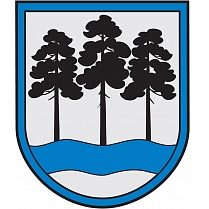At the end of 2022 the price of natural gas went down in Europe’s wholesale market. This was largely caused by the drop in consumption, high prices, energy austerity and energy efficiency measures. Nevertheless, caution should be maintained. On top of that, it has become nearly impossible to predict gas price trends, says Latvenergo JSC analyst Rodika Prohorova.
The price of natural gas in Europe’s wholesale market in the middle of December 2022 went down rapidly from an average of 140 EUR/MWh to 80 EUR/MWh. In January 2022 contract prices for next month varied between 55 EUR/MWh and 77 EUR/MWh. Remembering the peak price of more above 300 EUR/MWh in 2022, however, it should be said –
current prices remain twice as high as the historical 10-year average – around 30 EUR/MWh.
Consumption is significantly down in both industry, service and private sector, which is dictated by the drop in economic development, expensive resources, energy austerity and energy efficiency measures.
On the global market gas offers can cover existing demand. For example, China’s natural gas stores are on a high level, and industrial consumption still has not recovered after a period of pandemic-related restrictions.
Europe actively over-plans its balance and continues expanding procurements of liquefied natural gas. Gas is transported to Europe, forming a growing natural gas offer and providing Europe an alternative to Russian gas. This helps ensure the region’s security for this winter season. At the beginning of January, Europe’s gas storage facilities were 82% full, which is nearly two times more when compared with the same period of 2022, when storage facilities were 47% full. This year the level is above that of the average observed in the last five years, which is 63%.
One major factor that affects the natural gas price is the unusually warm winter in Europe, which affected demand for natural gas, particularly in regards to heat generation. Temperature records were exceeded in several European countries, including Latvia, at the beginning of January. Average air temperature was at +2° C… +7° C in January. On certain days air temperature went up as far as +20° C.
At the same time, air temperature fluctuations in January also brought increased wind energy yield.
For example, Germany reached power output of 50 GWh, which is 2.5 time higher than the norm – 20 GWh. If weather remains warm and windy, demand for heat is low.
Currently market players are confident the «panic in the natural gas market» experienced last year is over, and that this winter season Europe will have enough gas. Nevertheless, it is important to stay cautious, because the crisis caused by the Russian-Ukrainian war is far from over.
This is why the many uncertainties in Europe, where natural gas consumption is largely dictated by weather, stability of supplies and political events, make it nearly impossible to predict prices, said the expert.
Also read: SEB Nordic Outlook predicts light global recession at the start of 2023

